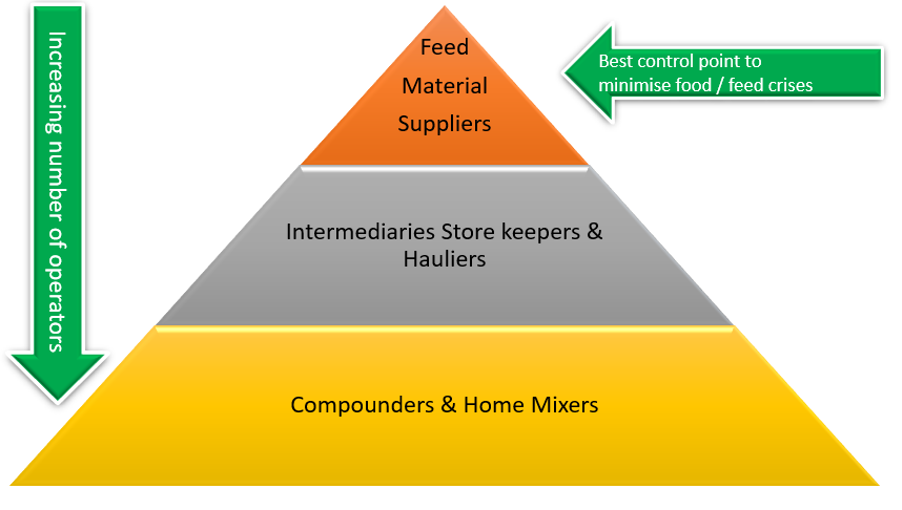Risk Management along the feed chain
Assuring feed safety is everybody’s business and requires special attention at the early stages of the feed chain, based on FEFAC’s “top-of-the-pyramid” principle, seeking to identify and minimize hazards at the beginning of the feed chain.
The FEFAC Vision on Feed Safety is based on three pillars: capacity building, optimization of risk management along the chain and cooperation with authorities.
Feed safety crises in the past have shown how vulnerable the livestock sector can be in case of shortcomings at early stages of the feed supply chain. Competition for resources, the increased focus on (food) waste reduction and climate change are all factors requiring focused attention by risk managers to maintain the integrity of the feed chain. This makes it clear that the responsibility to safeguard feed safety is shared between all actors of the feed chain, benefitting from close cooperation between feed business operators and feed safety assurance systems including an open dialogue and information exchange with competent control authorities.
FEFAC calls for a risk-based approach towards feed safety at each stage of the feed supply chain where it is most efficient, based on its “top of the pyramid” approach. Feed-related EU RASFF notifications show that the large majority of feed safety incidents have their origins at the beginning of the supply chain. The FEFAC Vision on Feed Safety Management invites feed ingredient suppliers to increase their involvement in the management of risks. Compound feed and premix manufacturers rely on their suppliers to proactively share information about feed ingredient risk profiles and safety data sheets that could facilitate the feed safety management at the level of compound feed production.
The credibility of the systems put in place by the feed chain partners has resulted in significant improvement. Almost 2/3 of the feed-related EU RASFF notifications are generated by controls performed by feed business operators themselves. The structured dialogue and cooperation between control authorities and operators, as laid down in the new EU Official feed and food control regulation 2017/625/EC, will further strengthen the efficacy and complementarity of official and private controls, through risk-based feed safety management measures. Both feed chain partners and official control authorities share the same key objective, preventing feed safety incidents to safeguard animal health & welfare as well as Public Health.

External links
Other sectoral Guides to Good Hygiene Practices in the feed sector
Relevant documents
- FEFAC Vision on Feed Safety Management ((15) PR 4)
- Cooperation between industry associations and national authorities ((15) PR 16)
- Common set of principles for Salmonella risk management ((10) PR 10)
- Community guide to good practice for the EU industrial compound feed and premixtures manufacturing sector for food-producing animals - EFMC version 1.2